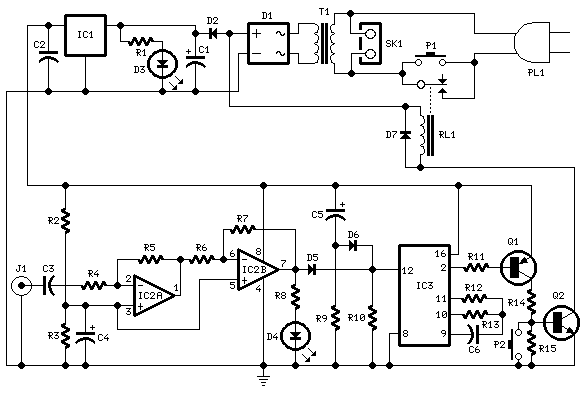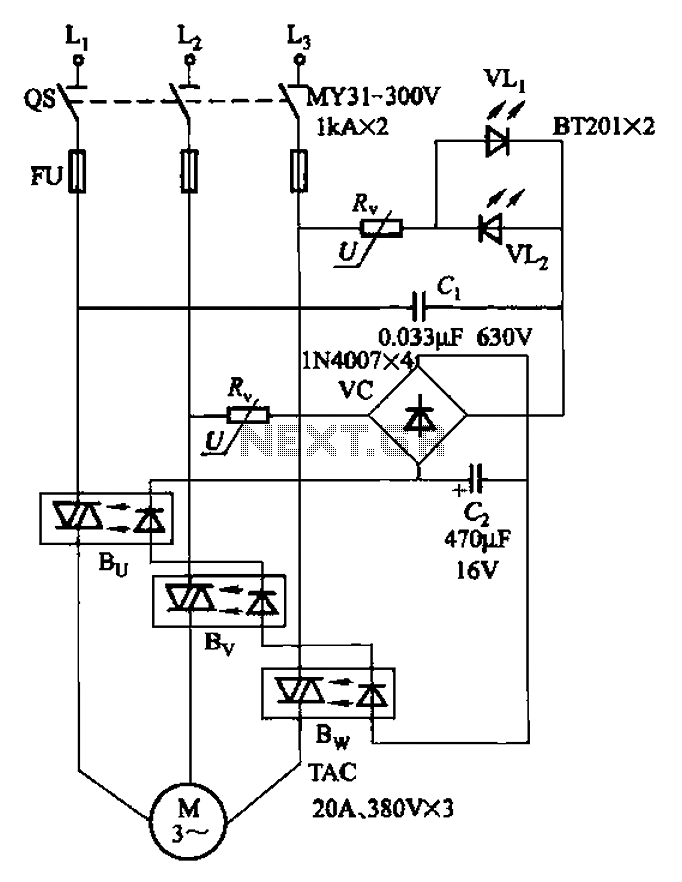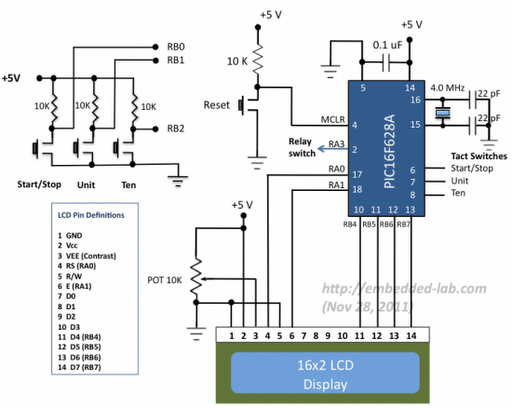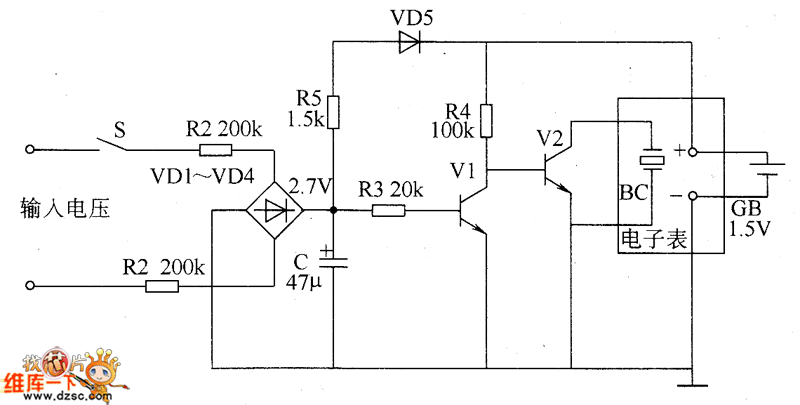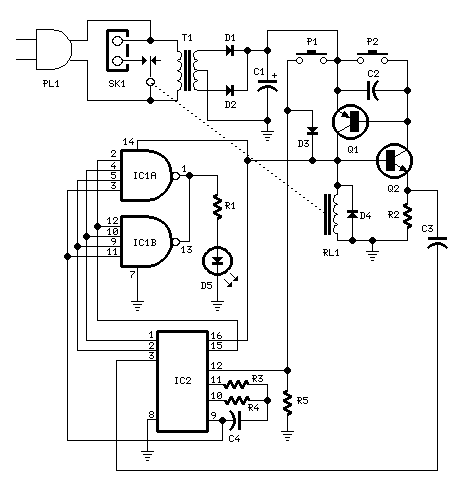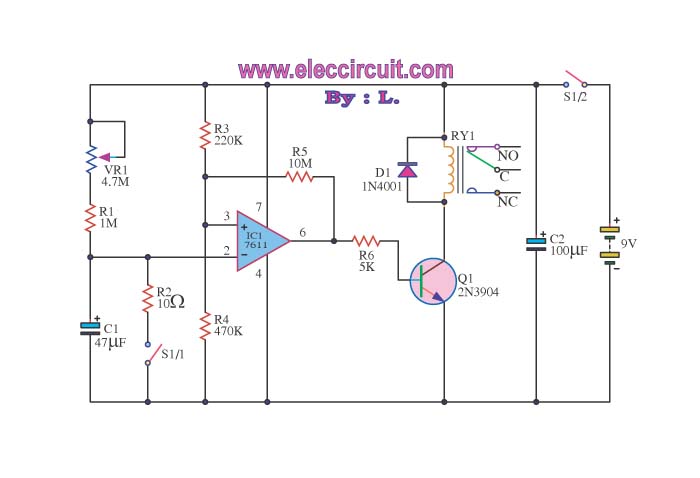
4017 IC For Three Hour Timer
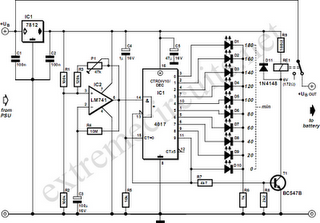
The circuit is designed for battery charging with a specified time limit of three hours. After the charging period is complete, the battery will be automatically disconnected from the charger. Key components include a 4017 integrated circuit (IC).
The circuit utilizes the 4017 decade counter IC to control the charging process. The 4017 IC is capable of counting pulses and can be configured to generate a specific output after a predetermined time interval. In this application, it is employed to manage the charging duration of a battery, ensuring that it is charged for exactly three hours.
The setup involves connecting the 4017 IC to a clock source, which can be derived from a timer circuit or an oscillator. The output from the 4017 IC can be connected to a relay or a transistor switch that controls the connection between the battery and the charger. When the circuit is powered on, the 4017 counts up to the set limit, which corresponds to the desired charging time. Upon reaching the count that signifies three hours, the output pin triggers the relay or transistor, effectively disconnecting the battery from the charger to prevent overcharging.
Additional components may include resistors and capacitors to stabilize the circuit and ensure accurate timing. A power supply is also necessary to provide the required voltage to the 4017 IC and other components. This arrangement allows for efficient battery management, promoting battery longevity and safety by preventing excessive charging.Function: made for battery charging time of three hours. Once the charging time is up the battery will be disconnected from the charger. Component: 4017 IC, .. 🔗 External reference
The circuit utilizes the 4017 decade counter IC to control the charging process. The 4017 IC is capable of counting pulses and can be configured to generate a specific output after a predetermined time interval. In this application, it is employed to manage the charging duration of a battery, ensuring that it is charged for exactly three hours.
The setup involves connecting the 4017 IC to a clock source, which can be derived from a timer circuit or an oscillator. The output from the 4017 IC can be connected to a relay or a transistor switch that controls the connection between the battery and the charger. When the circuit is powered on, the 4017 counts up to the set limit, which corresponds to the desired charging time. Upon reaching the count that signifies three hours, the output pin triggers the relay or transistor, effectively disconnecting the battery from the charger to prevent overcharging.
Additional components may include resistors and capacitors to stabilize the circuit and ensure accurate timing. A power supply is also necessary to provide the required voltage to the 4017 IC and other components. This arrangement allows for efficient battery management, promoting battery longevity and safety by preventing excessive charging.Function: made for battery charging time of three hours. Once the charging time is up the battery will be disconnected from the charger. Component: 4017 IC, .. 🔗 External reference
